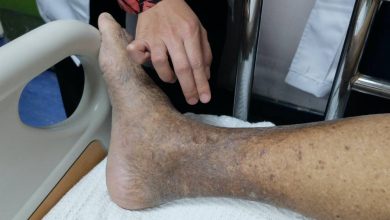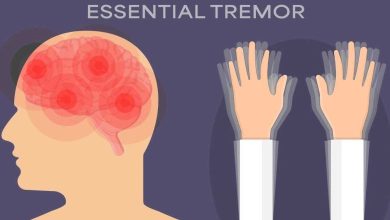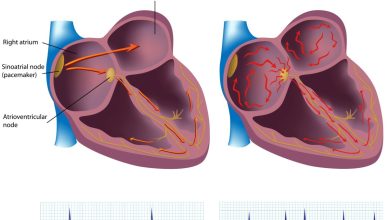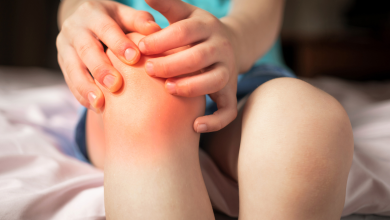Actinic Keratosis Symptoms, Causes, Diagnosis and Treatment
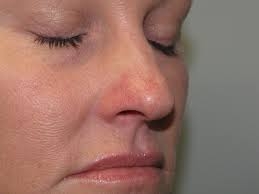
What is Actinic keratosis
Actinic keratosis (pronounced ak-TIN-ik ker-uh-TOH-sis), also known as solar keratosis, is a skin condition that happens with too much sun exposure. It causes rough, scaly spots of skin. They commonly appear on your:
- Scalp
- Face (lips, nose, ears)
- Arms
- The back of your hands
But it can form on other sun-exposed areas, too.
It’s the most common type of skin precancer. It can lead to a type of skin cancer called squamous cell carcinoma. Treatment is available to prevent actinic keratosis from turning into skin cancer.
Each year, more than 40 million Americans develop actinic keratosis.
Types of actinic keratosis
There are several types. Some of the most common include:
- Actinic cheilitis: Dry, cracked or white areas on your lower lip that may burn, peel or not heal
- Atrophic: A thin, flat, discolored spot on your face, arms or scalp
- Cutaneous horn: A hard, cone-shaped bump sticking out from discolored or irritated skin on your face or hands
- Hypertrophic: Wart-like, thick, rough, scaly bumps on your face or hands
Signs and Symptoms of Actinic Keratosis
If you have this skin condition, you might notice an area of skin that’s:
- Bleeding
- Bumpy
- Burning, stinging or uncomfortable under clothing
- Chapped (lower lip)
- Discolored (darker than your skin tone, red, pink, brown or gray)
- Itchy, tender or painful to the touch
- Rough, dry, scaly or crusty
Many types feel like sandpaper. Some could look like an acne breakout at first. You might mistake it for a scab or sore that won’t go away.
Actinic Keratosis Causes
Too much exposure to ultraviolet (UV) light causes actinic keratosis. It’s most often from the sun. It can also develop from frequent use of indoor tanning equipment, like tanning beds.
UV rays damage the DNA in your skin cells. It targets the outer layer of cells called keratinocytes. Over time, repeated sun exposure causes these cells to grow abnormally. This leads to a rough or scaly spot on your skin.
Risk factors of Actinic Keratosis
You may be more likely to get this skin condition if you:
- Are male
- Have a compromised immune system
- Have a light skin tone
- Have a history of actinic keratosis or skin cancers
- Have had many years of sun exposure or tanning bed use
- Live closer to the equator
Complications of Actinic Keratosis
Actinic keratosis can sometimes turn into skin cancer (called squamous cell carcinoma). Most cases receive treatment before they reach the cancer stage, but there’s still a risk. A healthcare provider can help you if you notice any skin changes.
Actinic Keratosis Diagnosis
A primary care physician or a dermatologist (a skin specialist) can usually diagnose this condition by examining your skin. They may use a special tool that magnifies your skin to get a better look. This exam is quick and painless.
Sometimes, your provider may need to take a small sample of your skin to send to a lab for testing. This is called a skin biopsy.
Actinic Keratosis Treatment
Treatment options depend on how many actinic keratoses (AKs) you have and where they are on your body. Your provider may recommend removing them during an office visit. Options include:
- Cryotherapy: This freezes off the spot using liquid nitrogen. It works best if you have just a few AKs. The area may blister and peel off after a few days.
- Photodynamic therapy: This uses a light-sensitive cream and special light to target AKs. It’s often used for multiple or recurring spots. You’ll need to avoid sunlight for a few days while your skin heals.
- Laser therapy: This uses focused light to destroy damaged skin cells. It may help with multiple AKs or larger areas.
- Chemical peel: This removes damaged skin with a special chemical solution. The top layer of skin peels off, and new, healthy skin forms as it heals.
- Curettage: A provider scrapes or burns off the damaged area. Your provider may use this with heat or cryotherapy to fully remove the spot.
- Surgical excision: Your provider cuts out the spot. They’ll numb the area first and may need to use stitches. Your skin usually heals in two to three weeks.
Your provider may also suggest using removal Natural Treatment for Actinic Keratosis and medicated creams for the best results.
Actinic keratosis topical medication
There are different medicated creams or gels that you can apply at home. You may need to use these for several weeks to a few months. Your provider will prescribe these for you.
Some examples include:
- 5-fluorouracil: A cream that kills damaged cells by stopping their growth
- Imiquimod: A cream that helps your immune system destroy abnormal skin cells
- Diclofenac sodium: A gel that reduces inflammation and treats damaged skin with fewer side effects
Some treatments can cause skin discoloration, peeling or irritation as they work. Your provider will give you instructions on how to use these and what to expect.
When should I see my healthcare provider?
Let your healthcare provider know if you have any changes to your skin, like:
- Bleeding, blistering, stinging or itchiness
- Growths
- Rough, raised or discolored spots
How long does it take for actinic keratosis to go away?
Most actinic keratoses heal within a few weeks after treatment. The exact timing depends on the type of treatment you receive. Your provider will explain what to expect.
Does actinic keratosis return after treatment?
Actinic keratosis can sometimes come back after treatment. To prevent this, it’s important to protect your skin from the sun, both during treatment and afterward.
Even if AKs go away, you should still see your provider once or twice a year for regular skin checkups. Because there’s a risk of skin cancer or returning spots, keeping up with these visits helps catch any problems early. If you notice a new or unusual spot, get it checked as soon as possible.
Can actinic keratosis be prevented?
The best way to prevent actinic keratosis is to limit your exposure to sunlight. You can protect your skin by:
- Avoiding tanning beds or indoor UV lamps
- Staying out of the sun between 10 a.m. and 4 p.m., when UV rays are the strongest
- Wearing protective clothing, like long-sleeved shirts, long pants, wide-brimmed hats and sunglasses
- Wearing sunscreen with SPF 30 or above every day, even when it’s cloudy or col
Reference: https://my.clevelandclinic.org/health/diseases/14148-actinic-keratosis
Related Articles :
Dermatomyositis Symptoms, Causes, Diagnosis and Treatment
Dyshidrosis Symptoms, Causes, Diagnosis and Treatment
Granuloma Annulare Symptoms, Causes, Diagnosis and Treatment
Frostbite Symptoms, Causes, Diagnosis and Treatment
Dermatitis Symptoms, Causes, Diagnosis and Treatment
Genital Herpes – Sexually Transmitted Infection
Neurodermatitis Symptoms, Causes, Diagnosis and Treatment
Genital Warts Symptoms, Causes, Diagnosis and Treatment
Chickenpox Symptoms, Causes, Diagnosis and Treatment
Atopic Dermatitis Symptoms, Causes, Diagnosis and Treatment
Adult Still’s Disease Symptoms, Causes, Diagnosis and Treatment
Addison’s Disease Symptoms, Causes, Diagnosis and Treatment
Alkaptonuria Symptoms, Causes, Diagnosis and Treatment
Boils Symptoms, Causes, Diagnosis and Treatment
Acne Symptoms, Causes, Diagnosis and Treatment
By : Natural Health News

